Flers-Courcelette

Canadian soldiers on a motor lorry returning victorious from the Battle of Courcelette [Battles of the Somme]. Some are displaying war trophies, such as German steel helmets and pickelhaubs (spiked leather helmet). September, 1916.
Credit: Canada. Department of National Defence/Library and Archives Canada (MIKAN no. 3404741)
First World War
Date
15-22 September 1916
Geographical parameters
The Combles valley to Hardecourt; thence road to Maricourt – Fricourt – Bécourt – Albert (exclusive); thence the river Ancre
Context
A battle honour incorporating the tactical incident “Capture of Martinpuich”, formally entitled the “Battle of Flers-Courcelette”, and itself being part of “The Battles of the Somme”.Footnote 1
Description
The Honour “Flers-Courcelette” was awarded to units of the British Expeditionary Force that participated in the September offensive on the Somme. It was a two-army assault between Combles and Thiepval that began on 15 September. The Canadian Corps (Lieutenant-General Sir J.H.G. Byng), on the right flank of the Reserve Army, was assigned to take the area surrounding the village Courcelette. The 2nd Canadian Division (Major-General R.E.W. Turner, VC) attacked astride the Albert-Bapaume road with the objective of taking the village of Courcelette while the 3rd Division (Major-General L.J. Lipsett) attacked on its left to provide flank protection. The overall British plan incorporated the use of a creeping artillery barrage and a new doctrine that broke up the advance into a series of successive bounds by the infantry. For the first time, the highly secretive “tanks” were to be used during this attack. The Canadian attack was launched under this rolling barrage and in the 2nd Division area the 6th (Brigadier-General H.D.B Ketchen) and 4th (Brigadier-General R. Rennie) Brigades made the first bound securing a line near a former sugar factory. At this point, there was a short pause for the 5th Brigade (Brigadier-General A.H. Macdonell) to advance and carry the attack forward to the road between Courcelette and Martinpuich. On their left the 8th Brigade (Brigadier-General J.H. Elmsley) took the German part of the German Fabeck Graben trench line that the 7th Brigade (Brigadier-General A.C. Macdonell) then pushed further east towards Courcellette where the 5th Brigade was attacking the village. During the attack the Canadian Division were also supported by the newly formed 1st Motor Machine Gun Brigade, which despite its title was a unit and not a formation. The Germans, pushed back from their positions, made several counter-attacks on the Canadians. Many of these attacks impacted heavily on the village of Courcelette, which formed an apex in the line, but was successfully defended by the 22nd Battalion. On the 18th of September the 1st Canadian Division (Major-General A.W. Currie) relieved the 5th Brigade in the front line and continued to fend off German counter-attacks. The 1st Canadian Brigade (Brigadier-General G.B. Hughes) carried out another small attack in front of Courcelette on 22 September pushing the Germans back another 500 yards. In its first major assault on the Somme the Canadian Corps had carried out a successful operation advancing over a mile but at a cost of over 7000 casualties. The overall British offensive was a limited success. Although successful between Courcelette and Flers to the south, the village of Combles, further south, was not taken and the sought after breakthrough was not made.
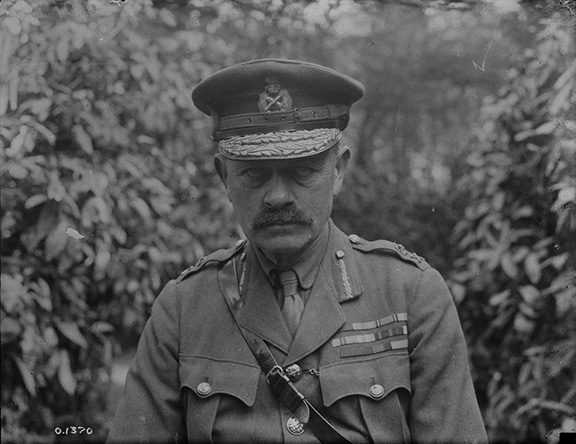
Sir Julian Byng, commanding officer of the Canadian Corps, June 1916-June 1917. Location unknown. May, 1917.
Credit: Canada. Department of National Defence/Library and Archives Canada (MIKAN no.3213526)
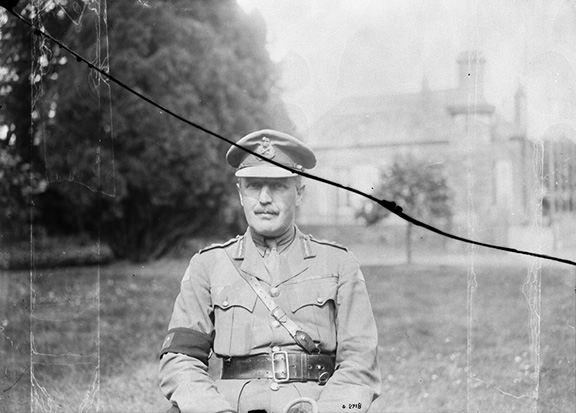
Major-General L.J. Lipsett, commander of the 3rd Canadian Division. Camblain l'Abbé. May, 1918.
Credit: Canada. Department of National Defence/Library and Archives Canada (MIKAN no. 3218379)
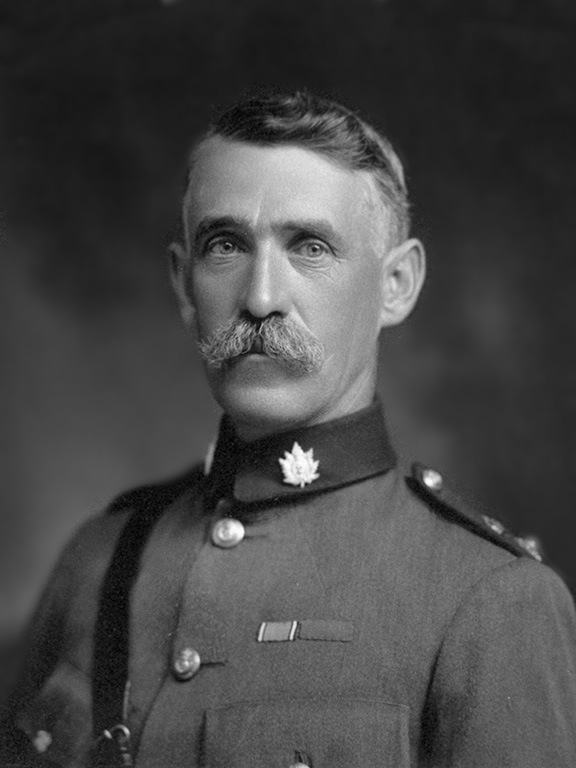
Brigadier-General Robert Rennie shown here as a Major-General in the 1920s.
Credit: Courtesy of John Stephens, Curator, The Queen's Own Rifles of Canada Regimental Museum
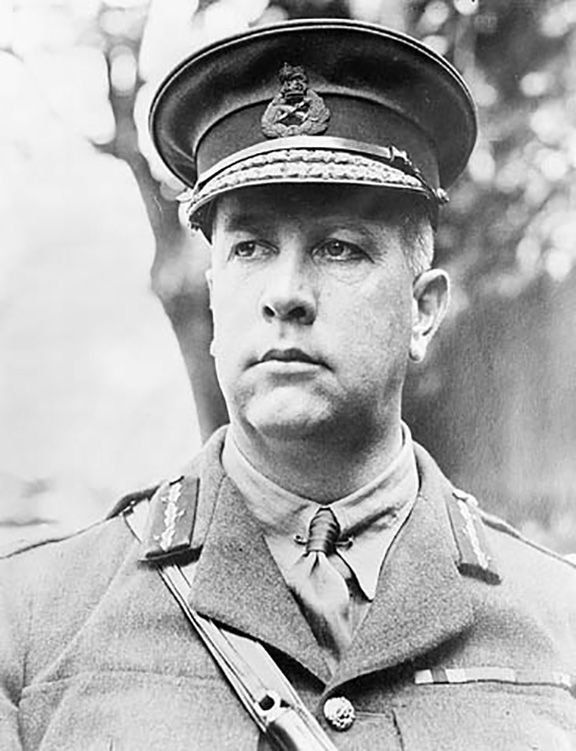
General Currie, Commander of the Canadian troops in France, and A.D.C. Location unknown. June, 1917.
Credit: Canada. Department of National Defence/Library and Archives Canada/PA-001370 (MIKAN no. 3191901)
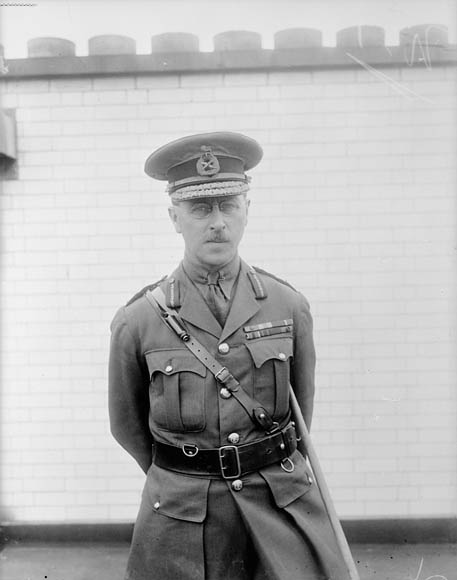
Lieutenant General R.E.W. Turner, V.C. Location unknown. 1914-1919.
Credit: Canada. Department of National Defence/Library and Archives Canada/PA-007941 (MIKAN no. 3221894)
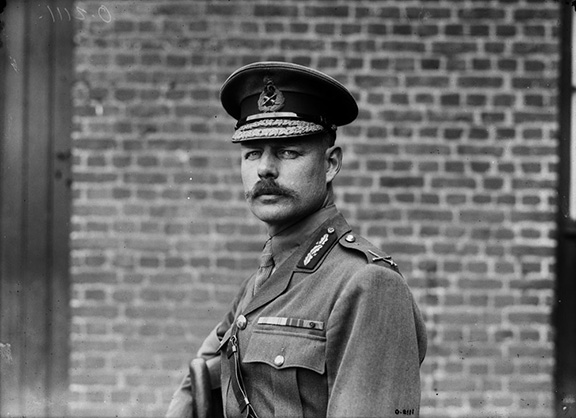
Brigadier-General Huntly D.B. Ketchen commanded the 6th Canadian Infantry Brigade. Seated portrait. October, 1917
Credit: Canada. Department of National Defence/Library and Archives Canada (MIKAN no. 3217396)
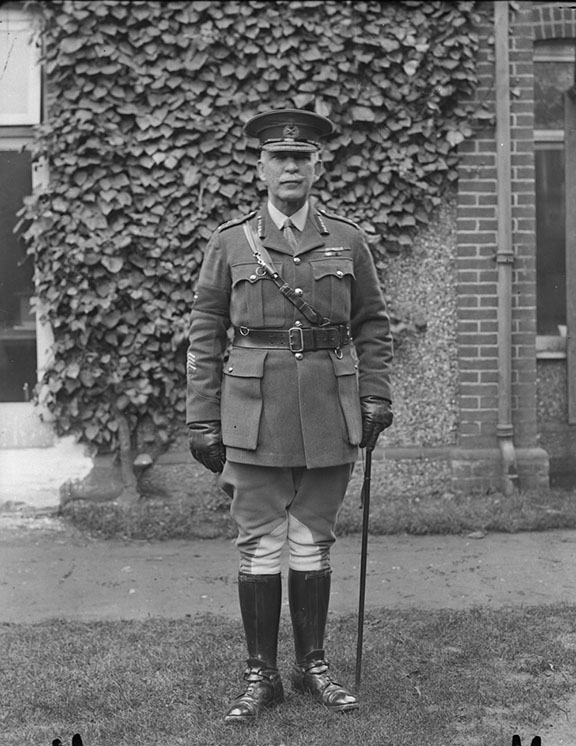
Major-General Sir Archibald Cameron Macdonell was the General Officer Commanding the 1st Canadian Division from June 1917 on. Location unknown. Date unknown.
Credit: Canada. Department of National Defence/Library and Archives Canada (MIKAN no. 3218799)

Brigadier-General Garnet Hughes (1st Canadian Infantry Brigade) the son of Sam Hughes, the Minister of Militia and Defence. Later in 1916, Brigadier-General G. Hughes receives a promotion to command the 5th Canadian Division, an administrative posting. Photograph taken July, 1916. Location unknown.
Credit: Canada. Department of National Defence/Library and Archives Canada/PA-000356 (MIKAN no. 3216967)
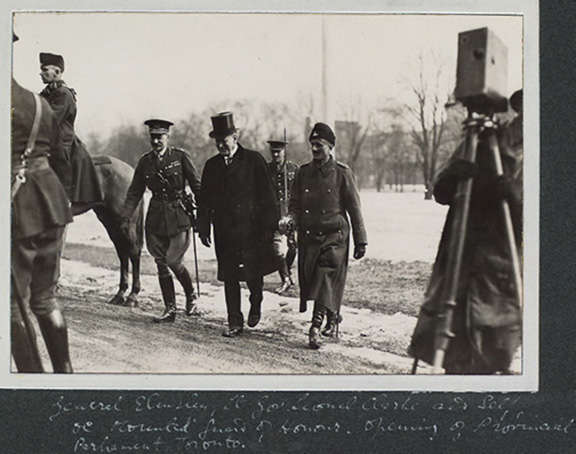
From left to right, General James Elmsley, Lieutenant-Governor Lionel Clarke and Reginald S.Timmis attending the opening of Provincial Parliament, Toronto, Ont. 1920.
Credit: Timmis, Reginald Symonds, 1884-1968; collection Baldwin; Toronto Reference Library 995-1-10-13a

Map displaying the Canadian Corps attack on Courcelette, 15 September 1916.
Credit: Map from Nicholson, From C.E.F., 1914-1919; p. 170.
Awarded to:
Currently serving units
- 1st Hussars
Award to the 1st Hussars (GO 71/30) - 56th Field Artillery Regiment, RCA
Awards to the 4th Canadian Infantry Battalion, CEF (GO 110/29) and The Dufferin Rifles of Canada (GO 110/29) - The Argyll and Sutherland Highlanders of Canada (Princess Louise's)
Awards to the 19th Canadian Infantry Battalion, CEF (GO 110/29) and The Argyll and Sutherland Highlanders of Canada (Princess Louise's) (GO 110/29) - The Black Watch (Royal Highland Regiment) of Canada
Awards to the 42nd Canadian Infantry Battalion, CEF (GO 110/29) and The Royal Highlanders of Canada (GO 110/29). - The British Columbia Dragoons
Awards to the 2nd Canadian Mounted Rifles Battalion, CEF (GO 110/29) and The British Columbia Dragoons (GO 110/29) - The British Columbia Regiment (Duke of Connaught's Own)
Awards to the 29th Canadian Infantry Battalion, CEF (GO 123/29) and The Vancouver Regiment (GO 71/30) - The Canadian Scottish Regiment (Princess Mary's)
Awards to the 3rd Pioneer Battalion (48th Canadians), CEF (GO 110/29) and The Canadian Scottish Regiment (GO 110/29) - The Essex and Kent Scottish
Awards to the 18th Canadian Infantry Battalion, CEF (GO 110/29) and The Essex Scottish (GO 110/29) - The Fort Garry Horse
Award to The Fort Garry Horse (GO 5/31) - Governor General's Foot Guards
Awards to the 2nd Canadian Infantry Battalion, CEF (GO 123/29) and The Governor General's Foot Guards (GO 32/32) - The Governor General's Horse Guards
Awards to the 4th Canadian Mounted Rifles Battalion, CEF (GO 110/29), The Governor General's Body Guard (GO 112/35), and The Mississauga Horse (GO 110/29) - The Lake Superior Scottish Regiment
Awards to the 52nd Canadian Infantry Battalion, CEF (GO 123/29) and The Lake Superior Regiment (GO 110/29) - Lord Strathcona's Horse (Royal Canadians)
Award to Lord Strathcona's Horse (Royal Canadians) (GO 88/31) - The Loyal Edmonton Regiment (4th Battalion, Princess Patricia's Canadian Light Infantry)
Awards to the 49th Canadian Infantry Battalion, CEF (GO 110/29) and The Edmonton Regiment (GO 110/29) - The North Saskatchewan Regiment
Awards to the 1st Canadian Mounted Rifles Battalion, CEF (GO 110/29), the 16th Canadian Light Horse (GO 110/29) and The Saskatchewan Mounted Rifles (GO 110/29) - The Nova Scotia Highlanders
Awards to the 25th Canadian Infantry Battalion, CEF (GO 123/29) and The Colchester and Hants Regiment (GO 110/29) - The Princess of Wales' Own Regiment
Awards to the 21st Canadian Infantry Battalion, CEF (GO 123/29) and The Princess of Wales' Own Regiment (GO 110/29) - Princess Patricia's Canadian Light Infantry
Award to Princess Patricia's Canadian Light Infantry (GO 123/29) - The Queen's Own Cameron Highlanders of Canada
Awards to the 43rd Canadian Infantry Battalion, CEF (GO 110/29) and The Queen's Own Cameron Highlanders of Canada (GO 110/29) - The Queen's Own Rifles of Canada
Awards to the 3rd Canadian Infantry Battalion, CEF (GO 123/29) and The Queen's Own Rifles of Canada (GO 110/29) - The Queen's York Rangers (1st American Regiment) (RCAC)
Awards to the 20th Canadian Infantry Battalion, CEF (GO 110/29) and The Queen's Rangers, 1st American Regiment (GO 110/29) - Royal 22e Régiment
Award to the Royal 22e Régiment (GO 110/29) - The Royal Canadian Dragoons
Award to The Royal Canadian Dragoons (GO 5/31) - The Royal Canadian Hussars (Montreal)
Awards to the 1st Canadian Motor Machine Gun Brigade, CEF (GO 110/29) and the 1st Motor Machine Gun Brigade (GO 110/29) - The Royal Canadian Regiment
Awards to the 1st Canadian Infantry Battalion, CEF (GO 110/29), The Royal Canadian Regiment (GO 110/29) and The Canadian Fusiliers (City of London Regiment) (GO 110/29) - The Royal Hamilton Light Infantry (Wentworth Regiment)
Awards to the 4th Canadian Infantry Battalion, CEF (GO 110/29) and The Royal Hamilton Light Infantry (GO 110/29) - The Royal New Brunswick Regiment
Awards to the 26th Canadian Infantry Battalion, CEF (GO 110/29) and The Saint John Fusiliers (GO 110/29) - The Royal Regiment of Canada
Awards to the 58th Canadian Infantry Battalion, CEF (GO 110/29), The Royal Grenadiers (GO 110/29), and The Toronto Regiment (GO 110/29) - The Royal Regina Rifles
Awards to the 28th Canadian Infantry Battalion, CEF (GO 110/29) and The Regina Rifle Regiment (GO 110/29) - The Royal Winnipeg Rifles
Award to the 27th Canadian Infantry Battalion, CEF (GO 123/29) - The Sherbrooke Hussars
Awards to the 5th Canadian Mounted Rifles Battalion, CEF (GO 110/29) and the 7th/11th Hussars (GO 10/39) - The South Alberta Light Horse
Awards to the 31st Canadian Infantry Battalion, CEF (GO 110/29), The South Alberta Regiment (GO 110/29) and the 19th Alberta Dragoons (GO 71/30)
Units on the Supplementary Order of Battle
- 27th Field Artillery Regiment, RCA
Award to The Eastern Townships Mounted Rifles (GO 110/29) - 38th Field Battery, RCA
Awards to the Machine Gun Squadron, Canadian Cavalry Brigade, CEF (GO 5/31) and the 1st Cavalry Machine Gun Squadron (GO 5/31) - 50th Field Artillery Regiment (The Prince of Wales' Rangers), RCA
Award to The Peterborough Rangers (GO 110/29) - 118th Medium Battery, RCA
Awards to the 1st Canadian Mounted Rifles Battalion, CEF (GO 110/29) and The Manitoba Mounted Rifles (GO 5/31) - The Victoria Rifles of Canada
Awards to the 24th Canadian Infantry Battalion, CEF (GO 110/29), the 60th Canadian Infantry Battalion, CEF (GO 110/29), and The Victoria Rifles of Canada (GO 110/29)
Disbanded Units
- 1st Canadian Pioneer Battalion, CEF
Award to the 1st Canadian Pioneer Battalion, CEF (GO 88/31) - 2nd Canadian Pioneer Battalion, CEF
Award to the 2nd Canadian Pioneer Battalion, CEF (GO 123/29) - The Manitoba Regiment
Award to The Manitoba Regiment (GO 123/29) - The North Alberta Regiment
Awards to the 31st Canadian Infantry Battalion, CEF (GO 110/29) and The North Alberta Regiment (GO 110/29)
Page details
- Date modified: